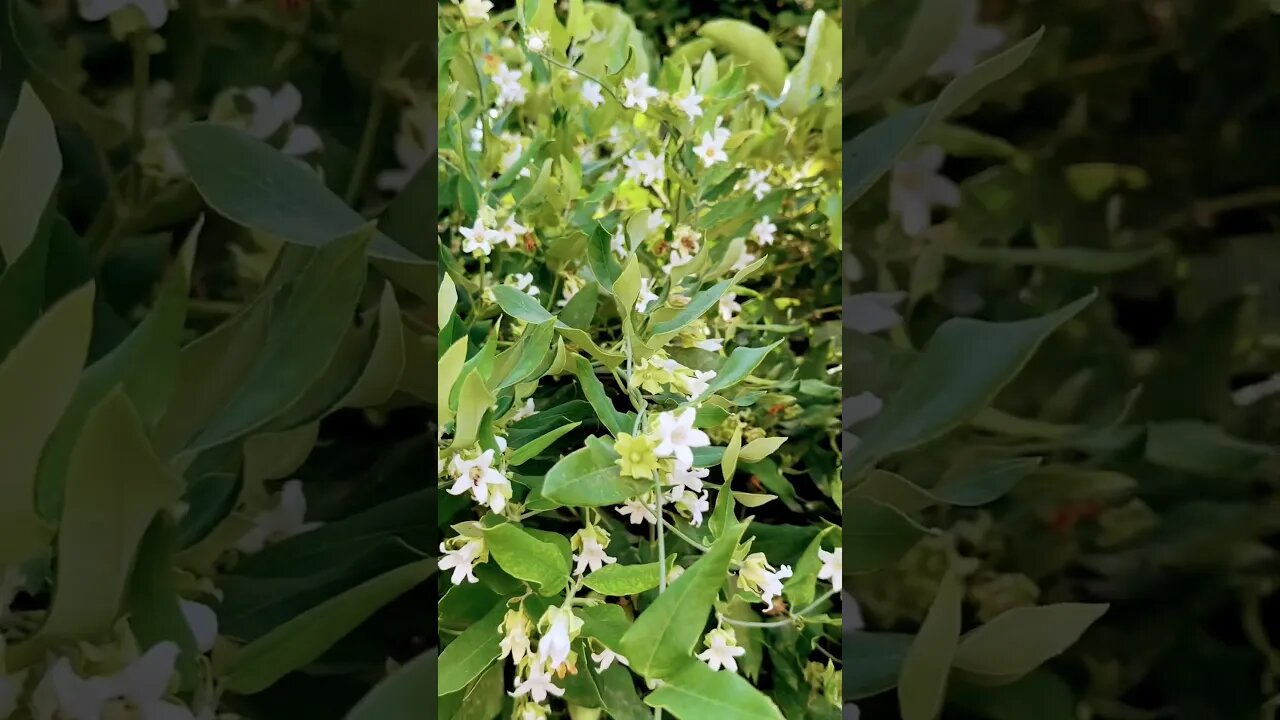Premium Only Content

Everything about the Moth Plant
Moth Plant (Araujia sericifera), also known as the White Bladderflower, Cruel Vine, or Common Moth Vine, is a perennial climbing plant native to South America, particularly in Brazil, Paraguay, Argentina, and Uruguay. It has been introduced to other parts of the world, including Australia, New Zealand, and parts of Europe, where it is considered invasive due to its ability to crowd out native species.
Characteristics
The plant is known for its fast growth and vigorous nature. Its stems can climb over other vegetation, reaching a height of up to 7 meters.
The leaves are opposite, oval-shaped, and have a green glossy appearance. The leaf edges are entire and the leaf base is cordate (heart-shaped).
The plant gets its common name from the moth-like appearance of its flowers. These are waxy white, sweetly scented, and typically bloom in the evening to attract moths for pollination. Following flowering, the plant produces large, bladder-like seed pods that contain numerous black seeds with silky tufts of hair that facilitate wind dispersal.
Impact
Despite its attractive flowers and fragrance, Moth Plant is considered a weed in many areas where it has been introduced. It can form dense infestations that smother and kill other plants, thereby reducing biodiversity. Its ability to produce a large number of seeds, combined with its robust climbing growth habit, allows it to spread quickly and over large areas. Control can be challenging due to the plant's ability to regrow from root fragments.
Control Methods
Control methods for the Moth Plant can vary depending on the specific situation. Manual control methods can include hand-pulling or digging out the plant, including as much of the root system as possible. For larger infestations, chemical control might be necessary. Always check with local regulations and guidelines when considering chemical control, as some substances might be restricted or require special permits.
In gardens, it's recommended to monitor the area for new growth and remove any seedlings immediately. It's also advisable not to plant it due to its invasive potential, even if it's not currently considered a problem in the local area.
-
 1:47:18
1:47:18
Steven Crowder
5 hours agoTo Execute or Not to Execute: Trump Flips the Dems Sedition Playbook Back at Them
291K289 -
 16:11
16:11
RealMetatron
20 hours agoHasan Piker got HUMBLED in New York
17.7K6 -
 LIVE
LIVE
Viss
4 hours ago🔴LIVE - Helping Those That Need It Today - Arc Raiders!
186 watching -
 43:37
43:37
The Rubin Report
4 hours agoTriggernometry Hosts Try to Hide Their Shock at Sam Harris’ Charlie Kirk Claim
36.5K28 -
 2:35:30
2:35:30
SOLTEKGG
2 hours ago🟢 Live: Pro Player Returns to Battlefield 6 RED SEC
5.73K1 -
 LIVE
LIVE
StevieTLIVE
4 hours agoFriday Warzone HYPE: Come Chill, Chat, and Watch Me Fry
25 watching -
 1:00:57
1:00:57
Dr. Eric Berg
3 days agoThe Dr. Berg Show LIVE - November 21, 2025
22.3K9 -
 2:23:44
2:23:44
Film Threat
19 hours agoWICKED FOR GOOD + SISU 2 + LOADS OF REVIEWS! | Film Threat Livecast
12.4K -
 1:39:56
1:39:56
The Mel K Show
3 hours agoMORNINGS WITH MEL K - Globalists Continue to Pursue Agenda 2030-While Americans are Being Easily Distracted 11-21-25
21.8K5 -
 1:02:43
1:02:43
VINCE
6 hours agoDid The Democrats Really Just Commit Treason? | Episode 174 - 11/21/25 VINCE
225K226